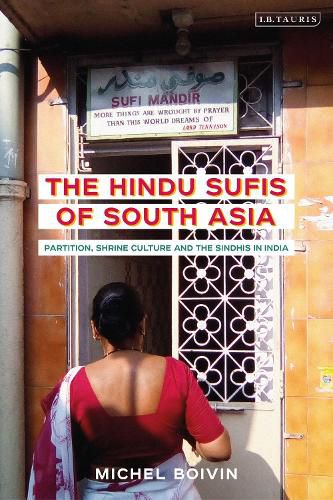Readings Newsletter
Become a Readings Member to make your shopping experience even easier.
Sign in or sign up for free!
You’re not far away from qualifying for FREE standard shipping within Australia
You’ve qualified for FREE standard shipping within Australia
The cart is loading…






Within the complex religious landscape of modern India, the community of Sindh stands out as a powerful example of interfaith relations. This Hindu community moved to India and practiced Sufism following Sindh’s inclusion to Pakistan in the 1947 partition. Drawing on a close analysis of literature and poetry, interviews with key informants, and a reading of historic rituals and architectures, Michel Boivin demonstrates that this active religious minority has managed to retain its unique Hindu-Sufi identity amidst the rigidification of official religions in both India and Pakistan. Of particular significance, Boivin argues, was the creation of sacred spaces called darbars. These shrines include a religious building where the Hindu Sindhis worship Sufi saints, chant Sufi poetry and perform Sufi rituals. In looking at this vibrant community as a trans-religious culture capable of navigating the challenges of the modern nation state, this book is an important contribution to understanding the Muslim-Hindu encounter in India.
$9.00 standard shipping within Australia
FREE standard shipping within Australia for orders over $100.00
Express & International shipping calculated at checkout
Within the complex religious landscape of modern India, the community of Sindh stands out as a powerful example of interfaith relations. This Hindu community moved to India and practiced Sufism following Sindh’s inclusion to Pakistan in the 1947 partition. Drawing on a close analysis of literature and poetry, interviews with key informants, and a reading of historic rituals and architectures, Michel Boivin demonstrates that this active religious minority has managed to retain its unique Hindu-Sufi identity amidst the rigidification of official religions in both India and Pakistan. Of particular significance, Boivin argues, was the creation of sacred spaces called darbars. These shrines include a religious building where the Hindu Sindhis worship Sufi saints, chant Sufi poetry and perform Sufi rituals. In looking at this vibrant community as a trans-religious culture capable of navigating the challenges of the modern nation state, this book is an important contribution to understanding the Muslim-Hindu encounter in India.